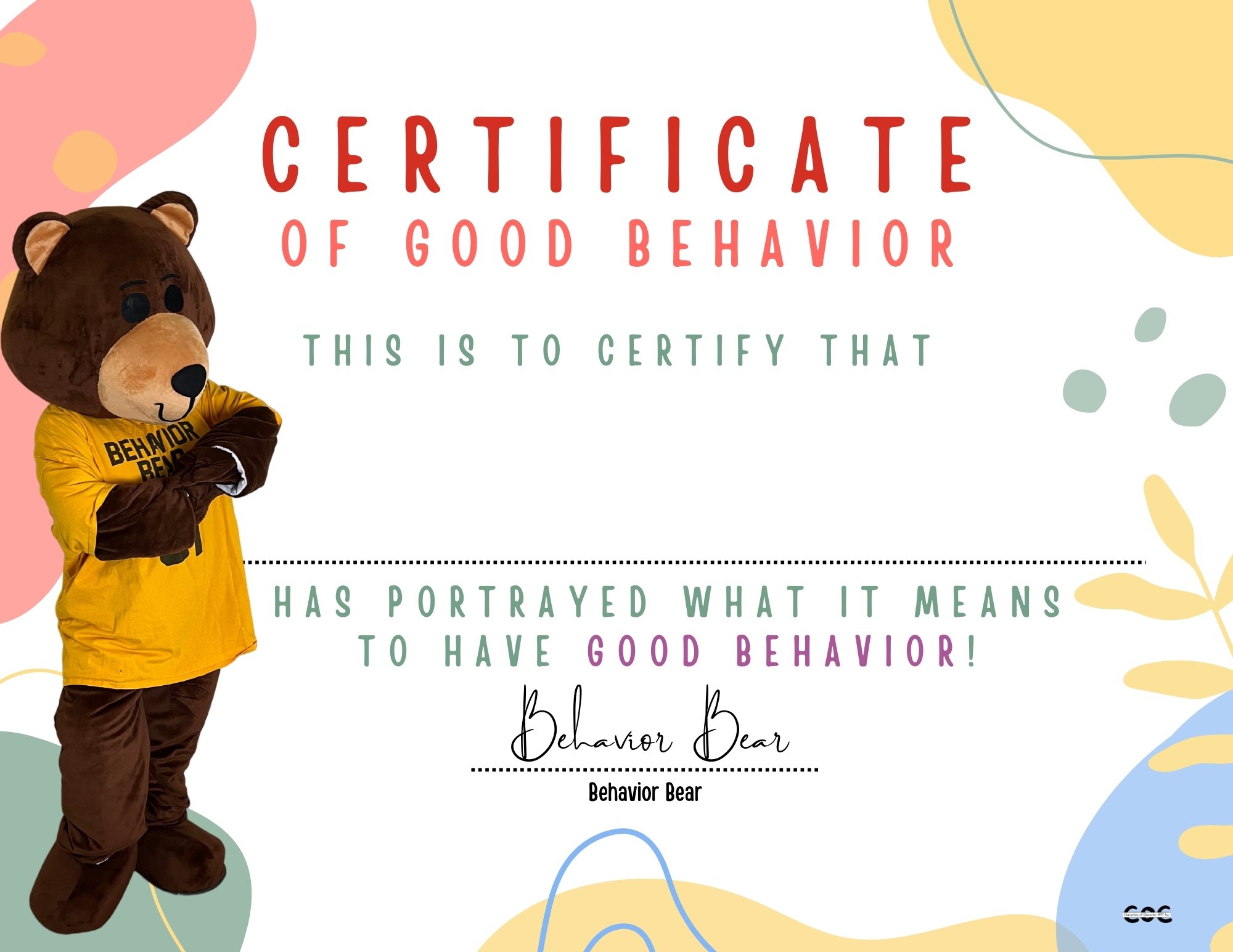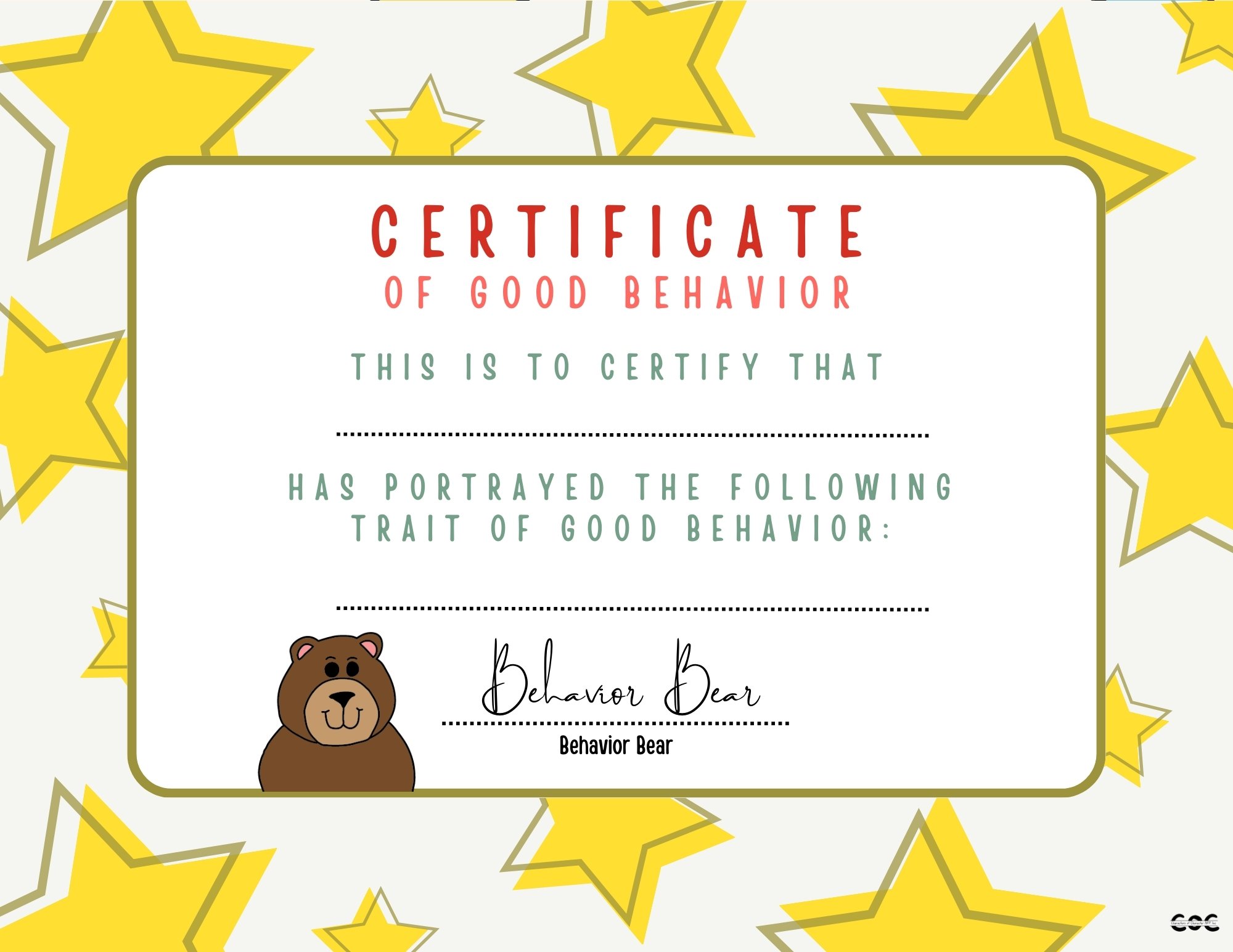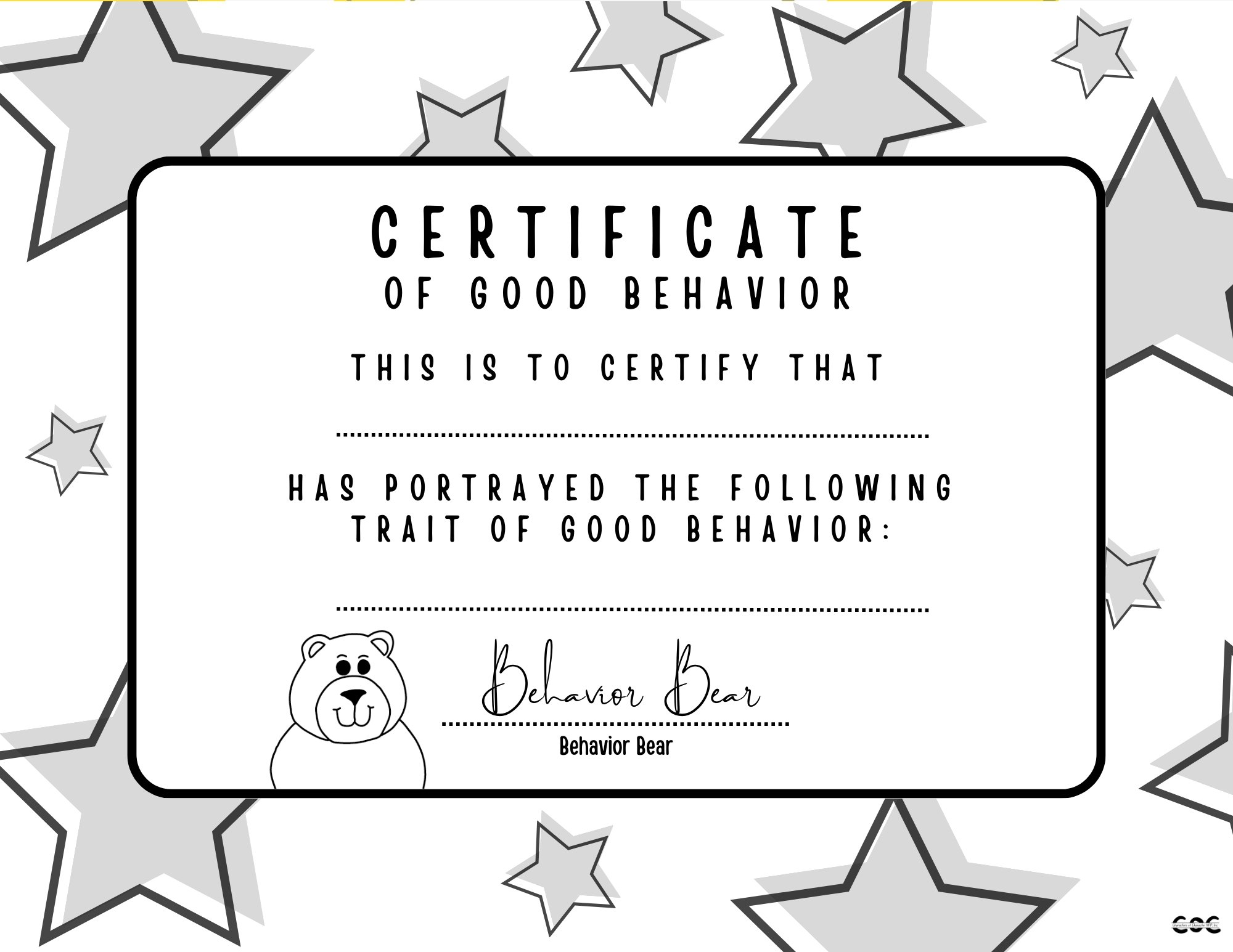Positive Reinforcements for Good Behavior
REWARDING GOOD BEHAVIORS AT HOME
Are you looking for ways to encourage good behavior at home? One great way to encourage good behavior at home is by using positive reinforcements. Positive reinforcements could be something simple like a sticker chart on the fridge or maybe a fun trip to get your child’s favorite treat if they use good behavior all week.
Another simple and effective way to reward positive behavior is with a certificate of achievement. Our pal, Behavior Bear, is a tool used to reinforce and teach a child what good behavior is. What does good behavior sound like? Children sharing and playing nicely with one another perhaps. Children respecting one another and better yet, their elders. What does good behavior look like? The same, children sharing with one another, having conversations together, taking turns and listening to one another. What does good behavior feel like? Peaceful, even comforting when you see your children using good behavior. Encourage them with a reward, a sticker chart, etc. to help them keep up the good work!
Click the image below to print out your Superhero Good Behavior Certificate with Behavior Bear.
REWARDING GOOD BEHAVIOR AT SCHOOL
What might good behavior look like in school? Much the same as good behavior at home. Children/students taking turns and not arguing. Children/students listening to what one another have to say. Children/students sharing with one another and helping one another out. Children/students speaking respectfully to one another. Children/students apologizing in a sincere manner where an apology is in need. One won’t continue to trust or respect another if there is an issue and an apology should be expressed in a sincere manner. Children/students asking for permission. This means raising their hand to ask to leave the room or group. This also means raising your hand if and when you have questions so that you’re not disrupting the entire classroom. Children/students using good manners is a part of having good behavior. Encourage this language and good behavior how you see fit in your classroom. This might be as a individual or most likely an entire classroom. With the entire classroom involved, all the students will be on their best behavior so that they might earn a reward at the end of the week or the month with a pizza party, an extra recess or whatever you choose. It’s important to reward your children/students as this will also let them know you’re in tune to their behavior and want them to behave, do good and be a role model for their siblings or peers.
CHARACTER EDUCATION CERTIFICATE OF ACHIEVEMENT FOR GOOD BEHAVIOR
My favorite quote by Benjamin Franklin is this:
TELL me and I forget, TEACH me and I remember, INVOLVE me and I learn.
Think about these words. If your child/student only hears you TELLING them to BEHAVE, what are they learning. When you teach a child/student what good behavior means, what is expected of them in any given situation they will listen and tune into the lessons. The best is of course when you INVOLVE a child/student! This makes them feel cared about when you involve them in the situation. Involve them in a conversation, involve them in classroom chores, involve them in activities and they will learn. When a child/student is clear about what the rules are at home or in a classroom they are more likely to have good behaviors themself. The secret is to encourage them, praise them and allow them to internalize this value so that it become a daily habit of theirs.
When a child is misbehaved, their is an underlying cause. Ask yourself, “is the child hungry, hurt, neglected, scared, cold, hot, etc.” Children don’t usually act out for no reason and when good behavior is a part of their character, you should try to get to the root of the problem of their acting out.
Characters of Character NFP hopes that our character Behavior Bear helps you in teaching your children and students what good behavior is all about. When we teach a child at an early age the importance of character it builds the foundation for a path to success into adulthood, encourages feelings of acceptance and assists in developing coping skills. Let’s empower a child with the tools to make better decisions. Together is better!





